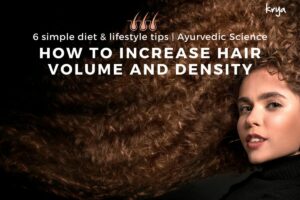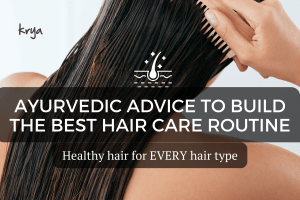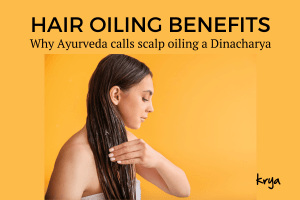This post was last updated on August 12, 2021 by Preethi Sukumaran
Good hair appears to be in alarmingly short supply today. We seem to have an epidemic of products available in a store to satisfy our every hair wish, but this appears to be the time when we are collectively most upset about the state of our hair.
I put out an appeal on our social media page asking for great hair stories from people. I get an interesting response from Preethi Raghav who is a 24 year old entrepreneur with her hair story. She tells me about her teenage tryst with the whole bag of hair tricks: shampoos, conditioners, serums, gels the works. And then in 2012, she decided to literally clean up her act and drop the synthetics.
The result?
“My hair has thickened to almost twice to what it was!,” says Preethi. “Plus, Shampoos and conditioners would leave my hair dry and frizzy no matter what I did! I used to have headaches almost every time after a shampoo. It never occurred to me that the chemicals could be the reason! My hair feels so earthy and nice now”.
Most of us aren’t this kind to our hair. Our five year journey at Krya has given us data points spread over thousands of consumers across different parts of India – and our conclusion is expected. Only a very tiny percent of consumers, no matter what their age , or lifestage is, are happy with their hair’s health. Everyone seems to experiment a lot with hair – we colour it, highlight it, straighten it, perm it, and shampoo it frequently. And all of this has an impact on how healthy or unhealthy our hair is.
The structure of our hair
Human hair, actually every single part of the human body is a marvel of bio engineering. The evolution of mammalian hair can be traced back to our common ancestors, the synapsids, which existed about 300 million years ago.
The 2 aspects of hair that we are most concerned about, gloss and strength are attributed to the 2 parts of hair: the cortex and the cuticle.
An intact, smoothly layered cuticle gives us hair that is naturally glossy and shiny. And its strength to withstand tugs, combing, brushing and the stresses of daily life comes from a cortex that has integrity.
The overlapping scales

The picture shows you how hair looks under 200X magnification and what is visible is the outer cuticle layer of the hair. ( The cuticle itself is made up of 6 – 8 layers of cells). Each cuticular cell is made up of proteins , lipids and polysaccharides – they are colourless and arranged in an overlapping roof-tile or fish scale like pattern.
This arrangement ensures 2 important aspects of how your hair is designed to protect itself:
1. the overlapping scale like pattern helps dirt and scales to be removed easily by lifting up the cuticular cells.
2. This overlapping pattern ( which ensures that each cuticular cell overlaps the next exposing only 1/6th of its surface) ensures that the cuticle regulates entry of water, and chemicals forming an effective barrier to protect the inner cortex of the hair.
Important parts of your hair:
- Epicuticle – the water barrier – prevents water from entering and being absorbed by hair. Hair which is structurally weak absorbs water and swells changing its shape
- A layer – high in cysteine which helps form disulfide bonds to give high structural strength and rigidity to the cuticle. This layer provides the strong structural matrix to hair. Damage to this layer makes your hair structurally weak.
- Cortex: Lies below the cuticle and forms the the major component of hair. The keratin protein in the hair is bound by disulfide bonds formed by cysteine residues within the cortex. These bonds are responsible for the natural shape of your hair strands.
Hair fall and damage – reasons
Your hair’s life depends on a number of factors like the medication you take, stress, your diet, and also the products you use on it.
The more you style or alter your hair’s characteristics (like colour, texture), the more you change the natural constitution of your hair. While the amount of styling products and treatments each kind of hair can accept is different , less is always more for hair health.
So here are 5 beauty treatments that can permanently damage your hair :
1. Excessive shampooing with SLS / SLES based shampoos
Shampoos exist to cleanse your scalp and remove excessive oil from your hair. But as we’ve discussed before, SLS and SLES are strong detergent like substances that literally bubble the oil out of your hair and scalp. With the sebum layer stripped from your hair, your hair starts to lose its sheen and becomes extremely dry.

In younger hair, excessive washing can also lead to aggressive sebum secretion from the sebaceous glands – which leads to more washing. This vicious cycle gives you extremely greasy hair that slowly starts to get dry as you grow older and your sebaceous glands start to secrete less oil.
2. Heat (hot air blower or hot water washes)
The constant use of hot water to wash your hair or repeated use of a blow dryer, can damage the overlapping pattern of the cuticle resulting in bumps on the cuticle surface where some of the cuticular cells have been damaged. Your hair therefore appears dull and loses its natural shine and gloss. Further, this cuticular cell loss exposes the inner layers of hair to the entry of excessive water and chemicals which can then damage the inner layers.

3. Hair texture altering treatments (straightening, perming, relaxing)
Several chemical treatments that are designed to alter hair’s shape or colour (straightening, perming , relaxing) work at the level of the cortex. Any change in hair texture or shape requires that the disulfide bonds within the cortex need to be dissolved. This damages the hair’s basic structural integrity at its core.

4. Highlights and colourants
Permanent hair colourants use an oxidation reaction that requires a compbination of para dyes (para-phenylenediamine, para-toluenediamine, and para-aminophenol ) with hydrogen peroxide. The hair colouration process takes place inside the cortex of the hair and the entry of these molecules into the hair cortex is facilated by the ammonia in hair dyes and some colours. In the newly advertised “ammonia free” dyes, this entry of the colour molecules is facilitated instead by sodium carbonate or ethylamine – so while your hair colour may be ammonia free, it is still a very dangerous process and is quietly damaging the core of your hair as it uses chemicals to slip past the hair’s natural barriers.

5. Chemically treated henna
Henna is also being contaminated by the addition of PPD dyes, and kali mehendi or “black henna” is a mixture of henna with PPD derivatives and hydrogen peroxide. Apart from cortex damage, hair dyes also strip the hair of 18-methyleicosanoic acid or 18-MEA. This is an important lipid component of the cuticle. When this is removed from hair, hair becomes coarse and dull.
A prescription for happy, healthy hair :
Here’s the first thing: our hair’s structural design ensures that our hair is supposed to look beautiful and feel healthy. All that we want from great hair: shiny, glossy, strong, long, etc, is achieved through the cells, polysaccharides and disulfide bonds and everything else in hair’s natural design.
But here’s the second thing: Unfortunately, we all seem to be rather proud of subjecting our hair to the equivalent of a harsh concentration camp: by using products that are designed to seek and destroy the fine structure of our hair.
So is there a prescription to healthy happy hair?
Yes there is. And we are going to spend more time on this in the Krya blog. But our prescription in short is this:
Oil your hair regularly, wash it when it feels dirty (not too often) with the gentlest possible natural shampoo. Don’t heat it in any way. Eat well and leave it alone.

- Oiling, as you might have guessed, helps work the arrector muscles, stimulates the papilla and lends a helping hand to your sebaceous glands as you get older.
- Washing it less frequently, keeps your cell structure intact – which is important if your hair is already damaged and cannot handle too much washing.
- Not heating hair too much just makes sense – hair is made of protein, so heating it is basically cooking it – think of frying tofu or an egg – you create an irreversible chemical reaction when you “cook” hair with hot air or water.
- Eating well is a good prescription for healthy anything – hair, skin, everything else. Our bodies are designed to be supported with dense, nutrient rich fruits and vegetables, high quality grains and micronutrients. Good eating repairs your whole body and gets your hair back to good health.
Lastly, your hair deserves a gentle, completely natural product that does not stress it out. Look for sulphate free, paraben free, all natural shampoos – your shampoo should gently work with you to lift out dirt and additional grease form your hair and scalp. It should not remove so much oil that your hair “squeaks” afterwards. A shampoo that uses natural, plant based surfactants like soapberry, shikakai, is gentle and effective on hair and skin.
So there you have it – a simple, do-able prescription to start with. Does it work? Yes it does. It did for me and a whole lot of other people you are going to be read about this month.
A happy hair month to you!
This article is a part of Krya’s series on healthy and happy hair, which we are writing all this September. Through the Krya healthy hair series, we hope to inform, educate and inspire you to restore your hair to its natural state of great health. Synthetic shampoos and hair products contain a huge host of suspect industrial chemicals that are not just toxic for us to use, but are polluting and toxic to the planet as well. The natural world is full of safe, environmentally sustainable, cruelty free options to care for your hair, and our series will try to present atleast a small part of this exciting world to you.
Consumers love our all natural, synthetic free, gentle hair washes- explore more here.
If you would like to explore our series further, here’s what We’ve written about hair health before this piece:
- What’s the deal with SLS and SLES – and why it shouldn’t come anywhere near you or your hair
- What is your hair supposed to be? A trial? A challenge? Or simply, your best friend – https://www.krya.in/blogk/2015/07/my-hair-feels-like-itself/
- Is beauty external? We think not – https://www.krya.in/blogk/2015/02/the-tree-of-life-the-holistic-approach-to-beauty-health/
- What should you be looking for on that product label?





any natural alternaive to ammoniafree hair colours. is it being addressed.
Sounds convincing! Do send details,pics,price of shampoo and conditioner